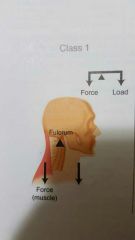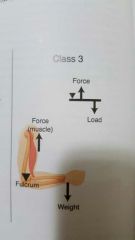![]()
![]()
![]()
Use LEFT and RIGHT arrow keys to navigate between flashcards;
Use UP and DOWN arrow keys to flip the card;
H to show hint;
A reads text to speech;
19 Cards in this Set
- Front
- Back
|
Define biomechanics |
A field of study that takes the principles of physics and applies them to the workings of the body |
|
|
Scientific models.... |
Reduce things to their essentials -> Establish a basis for understanding how things work -> Predict how things will behave -> Influence them to behave in a way we want |
|
|
What is equilibrium? (The law of inertia) |
Every object in a state of uniform motion tends to remain in that state of motion unless an external force is applied to it. |
|
|
Conservation of Energy (3rd law - law of reaction) |
Energy can never be created or destroyed — it can only be converted from one form to another. For every action there is an equal and opposite reaction. |
|
|
What are Newton's three laws of motion? |
1. Law of inertia 2. Law of acceleration 3. Law of reaction |
|
|
Law of acceleration |
A force applied to a body causes an acceleration of that body of a magnitude proportional to the force (F=ma) |
|
|
Center of mass |
Point of the body at which the mass if the body seems to be focused. |
|
|
Linear (or translational) motion |
-> Movement in a particular direction -> Force generated by the athlete's muscles and the resulting motion in a straight line |
|
|
Rotational motion |
-> Movement about an axis -> Force does not act through the center of mass, but rather is off center and this results in rotation |
|
|
Acceleration |
Rate of change of velocity |
|
|
Force as a vector |
Force as a push or pull of a certain magnitude in a particular direction |
|
|
Radius of gyration |
Average distance from the axis of rotation |
|
|
Three types of lever system |
1. Class I lever 2. Class II lever 3. Class III lever |
|
|
Class I lever |

|
|
|
Class II lever |

|
|
|
Class III lever |

|
|
|
Applied biomechanics |
Performance improvement Injury prevention and rehabilitation Fitness and personal training |
|
|
Applied biomechanics |
Performance improvement Injury prevention and rehabilitation Fitness and personal training |
|
|
The seven principles of biomechanics can be categorized into... |
1. Stability 2. Maximum effort 3. Linear motion 4. Angular motion |

